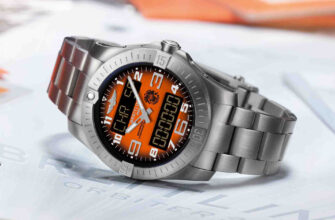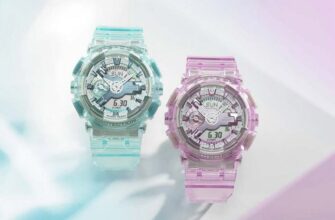A good modern multi-brand watch store, if the owner is distinguished by a breadth of views and a certain curiosity and courage, will never hesitate to show customers along with classic watches and extraordinary watches, which are often designer and fashion models.
In order to avoid confusion in terminology, let's agree that we will call designer those that by their appearance (hour indication, case shape) are very different from the classic ones, and we will classify as fashion not just popular ones, but those on which logos of fashion brands flaunt.
Of course, these two groups often intersect, but today we will separate them for the purity of the experiment, the task of which - and even if there is no task, for the sake of knowledge, just let's see what interesting things to offer watch designers and fashion houses, and at the same time plunge into the history of the issue. Let's start with design.
It would not be a strong exaggeration to say that the real revolution in the design of watches happened with the advent of quartz movements. The first serial quartz movement (Quartz Astron) was invented in the Japanese Seiko in 1970, the Swiss Beta 21 appeared a little later. Seiko used quartz in chronometry for many years, the company produced large clocks for astronomical observatories, and then these devices were reduced to the size of table clocks, and it became obvious to everyone that the next step would be quartz wristwatches, and that the Swiss and Japanese would compete.
But Seiko brought together a group of engineers from within the company, while the Swiss did what they do best - they formed a committee. This committee recruited engineers from several competing watch brands, scientists, and employees of electronics companies. A group of specialists settled in Neuchâtel, was named Center Electronique Horloger (CEH) and by 1967 produced the world's first quartz movement (Beta 1), but in a very small series, only five prototypes.
The serial quartz Beta 21 was huge, 30.9x26.5 mm, and this was in those years when thin watches were in vogue.
Although the Japanese were the first, the importance of the Swiss watch industry was great, so that the influence on design trends was determined primarily by Swiss brands.
There has always been a rule with mechanical watches that the more accurate they are, the more you will have to pay for them. After all, the more time the manufacturer spends on adjusting the watch, the more accurate it will be. Consequently, the people who did the "fine-tuning" were very highly paid workers.
Having invested a lot of money in the quartz project, all participating brands were determined to recoup their investments at once, and therefore the Beta 21 watches appeared on the market with a very high price tag, because they were more accurate than ever. Huge, by the standards of the then generally accepted standards, the size of the mechanism did not allow to produce thin elegant watches, and therefore watch brands decided to emphasize the quartz innovation by providing watches with a futuristic design. What seemed crazy, radical and futuristic in the 1970s cannot be compared with the riot of colors, shapes and materials that watch brand designers offer today - both in mechanical and quartz watches.
Look at the watches of modern brands founded by designers - Mazzucato (Simone Mazzucato), Gorilla Watches (Octavio Garcia), Electricianz and Sevenfriday (Lauren Rufenacht and Arnaud Duval), Ikepod (Marc Newson) - these are always expressive design objects that, over time, will not lose their attractiveness. Unlike most watches of fashion brands, for which the “here and now” is often much more important than a long-lasting effect, which, however, does not make them less attractive.

Ikepod watches owe their appearance to one of the most famous industrial designers of our time - Mark Newson. Nowadays, the unusual shape of the case does not surprise anyone, but more than 20 years ago, streamlined like a pebble Ikepod without the usual strap lugs, decisively stirred up the watch market.
In the 2000s, a new generation of buyers demanded new forms of expression, and Ikepod came in very handy. Today, in the neatest way, the ideas of the then Ikepod are embodied in the most budgetary collection of the brand, Duopod. Minimalistic, at first glance, appearance, but how many signs and symbols in this watch! Compare the shape of the watch with the famous Futuro-House by Matti Sauronen, pay attention to the shape of the hands, colors and finishes of the dials. Even the image of a quail on the crown makes sense - but more on that some other time.
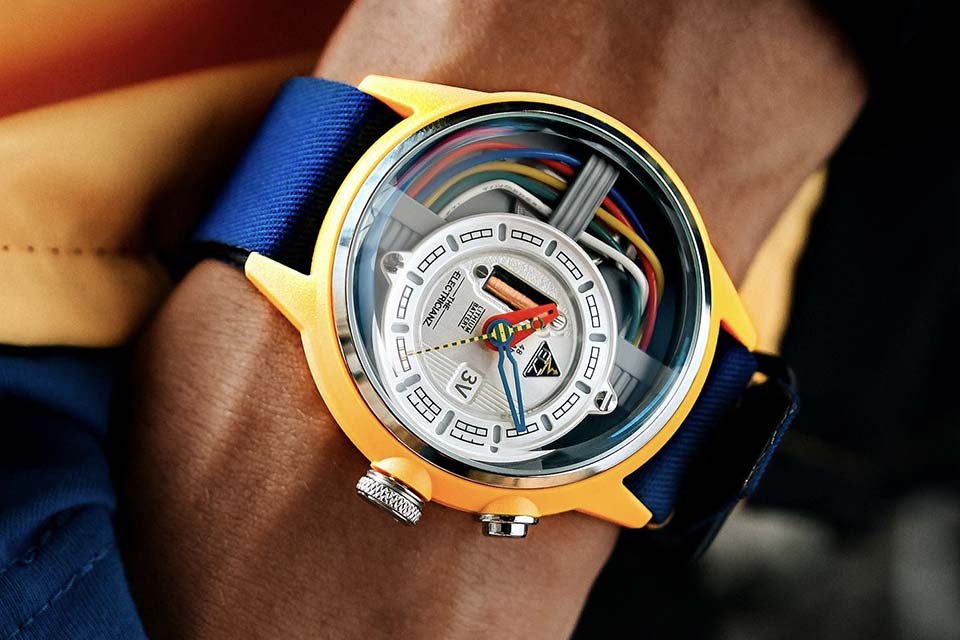
At Electricianz, whose entire line emphasizes the “electrical aspect” with their appearance, the most expressive conductors of the brand’s idea can be called the Nylon collection watches, Cable Z models - the steel case is covered with bright-colored nylon, like a braid of wires, under the glass on the side of the dial, the wires are yellow, red , green and white, bronze coil - everything, as in the set of a young electrician. Cable Z is a large watch with a case diameter of 45 mm, but it has a “little brother”, the Cablez watch, which is much more comfortable to wear, 42 mm.
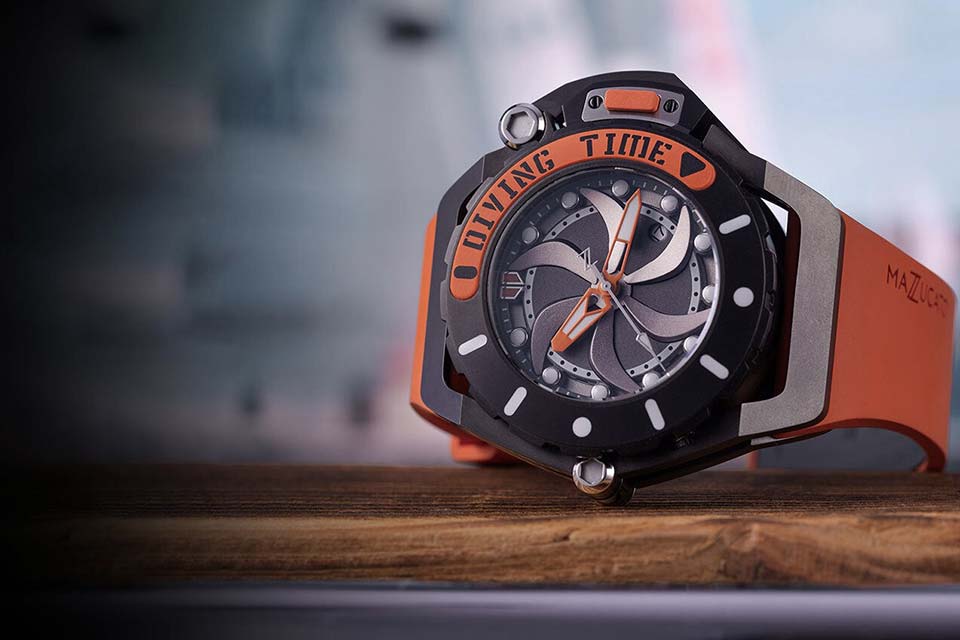
Simone Mazzucato's RIM Scuba watches at first glance do not differ strikingly from the large "diving" watches of other brands, although you cannot call them 100% typical. Large (48 mm) case, bright indication, crown protection - all these are quite familiar elements for "divers". But the inverted design, which allows you to quickly change the appearance of the "instrument", offering a more discreet look to the gaze of the dial - this is the corporate identity of Mazzucato, this is where the designer's talent manifested itself, this is why his watches are unconditionally loved.
Now let's talk about "fashionable" watches - not popular, but those that are decorated with logos of fashion houses, which is very often not the same thing. There are many fashion houses and brands, most of them are engaged in hours in one way or another, as a rule - by transferring a license to release to someone, less often - by raising the watch direction on their own.
Watches from a necessary tool began to turn into a fashion accessory through the efforts of jewelry companies in the early 20th century, their example was quickly followed by luxury goods manufacturers such as Hermès - in 1928 the company released the Ermeto model, which was produced for it by Movado from the Swiss La Chaux de -Background.
In the 1930s, the British Dunhill introduced several watches made by the Swiss Tavannes Watch. At that time, selling watches was not seen by such brands as a strategic decision to grow their business or as a way to expand their customer base - that will happen later. The first Dunhill or Hermès watches were one-of-a-kind watches made for a privileged clientele. In addition, the brands themselves perceived the first generation of fashion watches as a secondary accessory intended for display or use in advertising. They had no identity as such and were mainly used to add value to these companies' core merchandise - clothing and leather goods.
The traditional fashion watch business model has long been based on the cooperation of leading clothing and jewelry manufacturers on the one hand, and Swiss watch manufacturers on the other. This continued until the 1960s. Christian Dior was the first company to adopt a serious diversification strategy for fashion accessories, and especially watches. Watchmaking was at the heart of the brand's strategy, and in 1968 Dior launched its first collection of watches produced under license in Switzerland with the initials "CD".
By 1977, accessories provided the fashion house with 41% of turnover and 45% of profits. Watches were no longer secondary objects whose purpose was to increase the value of designer clothes - they became the basis of the brand's growth and the main source of profit. Licensed production continued until the purchase of the Parisian fashion house Christian Dior by Bernard Arnault and the reorganization of all watch and accessory activities by LVMH in the late 1980s.
The advent of quartz movements, a technology that quickly became readily available, brought new players to the watch market, and the introduction of Swatch watches in 1983 revolutionized the watch industry in that Swatch made watches a fashion and design item that anyone could suddenly buy. Finally, the fashion industry itself was then undergoing a transition to a new business model that required an expansion of the client base in order to increase profits.
Although Christian Dior laid the foundations for the concept of watches as fashion accessories, the Italian group Gucci became a trendsetter in the 1970s. This was due to the introduction of an organizational model that allowed the brand to gradually master and control production, all thanks to Severin Wunderman.
Severin Wunderman, a Belgian-American, whom we all remember today as a figure in the watch market, made his fortune in jewelry, but was wise and did not miss opportunities. In 1972, Wunderman met one of the sons of the founder of Gucci, Aldo Gucci, who also settled in the United States, and agreed with him on a license to manufacture Gucci watches. Very soon, the Severin Montres company from California was buying finished watches from a manufacturer in Bienne, Switzerland. In the first year, sales of Gucci watches brought about $ 3 million, three years later the amount was 70 million, by 1988 the turnover was already 115 million and provided about 18% of Gucci's profit.
A year earlier, Wundermann had reorganized processes, changed the company's name, and moved the operational headquarters to Lengnau, Switzerland. The American company has focused on the distribution of Gucci watches in the US, a traditionally strong market for the brand. The changes allowed Wunderman to directly control the supply and manufacture of watches.
The company experienced exponential growth for ten years before being acquired by Gucci in 1997 and Severin Wundermann continued his career at the helm of Corum – as you can see, making fashion watches is a very serious business and success requires a focus of minds and talents.
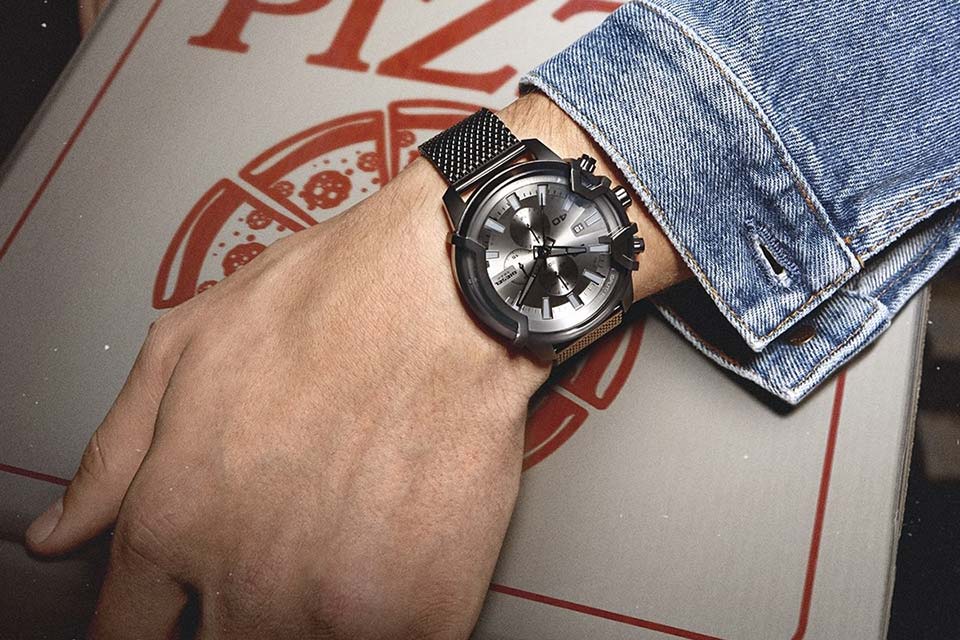
Since we are talking about talent and success, it's time to remember Fossil - this brand is probably familiar to you. Did you know that the Fossil group, in addition to the brand of the same name, also includes Skagen, Michelle, Relic and Zodiac, and under license the group produces Armani Exchange, Diesel, DKNY, Emporio Armani, Kate Spade New York, Michael Kors, Puma and Tory Burch, and that the turnover for 2020 and the previous five years exceeded $2 billion each year?
It all started in 1986, when the Kartsotis brothers, founders of Overseas Products International, launched Fossil watches on the American market. The watch was made in Hong Kong, outwardly they echoed the American watches of the 40s and 50s. The initial success of this marketing campaign was overwhelming, and the company's turnover increased from $2 million in 1987 to $32,5 million in 1990.
Encouraged by the results, the brothers adopted Fossil's development strategy, which was based on control over supply, access to fashion brands and verticalization of distribution. The strategy paid off, the Fossil group is among the top five largest watch manufacturers in the world.
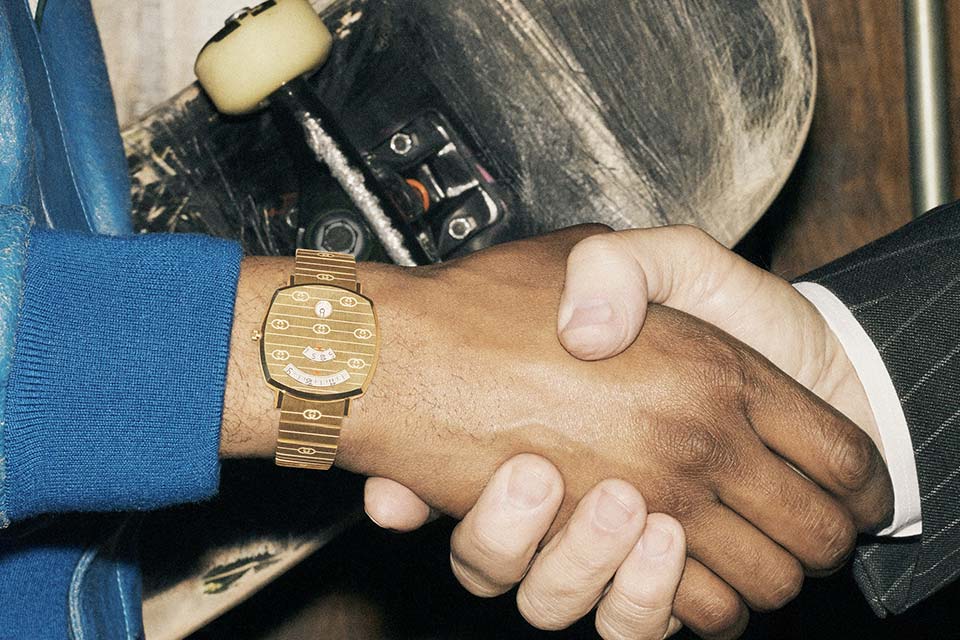
Once absolutely secondary, today fashion watches in many aspects set the tone and trends for the entire watch industry. Coach, Gucci, Chanel, Dior, Louis Vuitton and Ralph Lauren have become respected watchmakers. Licensed brands such as Armani, Diesel, Guess, Hugo Boss, Michael Kors and Tommy Hilfiger have won the respect of customers.
And so-called internet brands like Christopher Ward, Daniel Wellington, MVMT and Paul Valentine are showing classic watch brands how to reach out to younger audiences. The choice of fashion watches is great, the range of prices is also great, and I am sure you will definitely find one that will please you this season.

